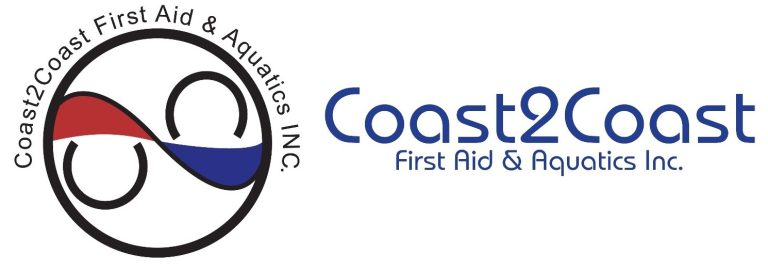IN THIS BLOG
IN THIS BLOG
- Can I be sued for providing someone with first aid?
- How can I know that I am doing things correctly?
- Can I kill someone while performing CPR?
- Can a person suffer rib fractures when I perform CPR?
- What should I do if I don’t have a first aid kit with me?
- How successful is CPR?
- Why do some medical victims say they smell toast burning?
- Why must I renew my First Aid certificate every 3 years?
- If I’m alone at the scene of an accident, is it more important to call 911 or help an injured person?
- Which are the most important items to have in my first aid kit?
First Aid courses are essential for the workplace, but many people also do them to help victims of accidents or sudden health emergencies. However, when they decide to attend a First Aid course, they are some questions more frequently than others. Therefore, we provide answers to your most frequently asked questions:
1. Can I be sued for providing someone with first aid?
Yes, you could, but the likelihood is minimal, thanks to the Good Samaritan Act observed throughout most of Canada.
If you assist someone in need, have asked for their permission to assist them if they are conscious, and do your best to help them, no matter the outcome, the law protects you from being sued, even if you made a mistake. Therefore, you can still help someone without fear of being sued, even with the most basic skills.
In all provinces except Quebec, you can drive past an accident and not stop to offer assistance. However, if you do start assisting, you cannot stop and leave before emergency services arrive because that could make the situation worse for the victim.
You can be held legally liable if you perform a procedure beyond your training or one beyond the scope of rational care. Therefore, you cannot decide to perform a procedure without having the proper training. For example, in a case where a person is choking, you can only perform CPR procedures, not a radical medical approach like a tracheotomy. We leave that to medical professionals!
Inquire about First Aid Training
Do you have more questions regarding First Aid training? Contact us today! Our customer service representatives are ready to assist you.
2. How can I know that I am doing things correctly?
Your level of training defines your confidence, ensuring that you perform the proper procedure in the correct steps. First Aid training encompasses theoretical and practical knowledge. However, the most significant part of the course includes hands-on practice, which will give you the confidence to perform the skills you learn correctly during any emergency.
3. Can I kill someone while performing CPR?
Performing CPR could cause damage to the individual’s rib cage; you need to press down on the chest firmly to a depth of about 2 inches or 5 cm. You may even crack one of their ribs when performing it on a person during an emergency. However, when faced with a person who is not breathing, the only thought you should have is that they need immediate assistance. Your compressions and rescue breaths can help the person who is already clinically dead to receive oxygenated blood to their vital organs and prevent damage to their vital organs.
Recent changes to the CPR protocol ensure that you perform CPR without checking for a pulse. This is because recent scientific reviews have proven that it won’t kill a person and doesn’t decrease the effectiveness of CPR. Additionally, looking for a pulse proved fatal to many victims because many people wasted a lot of time trying to detect one. Instead of wasting time checking for a pulse, you will first perform the ABCs of CPR.
Therefore, an unconscious person who is not breathing can only benefit from CPR, and any injuries they sustain at the time are to help save their lives.
4. Can a person suffer rib fractures when I perform CPR?
Yes, some people may suffer rib fractures when you give them CPR chest compressions. It doesn’t happen every time, but you want to ensure you provide effective chest compressions at the correct depth. Ensure your hands are in the proper position and continue the compressions during CPR even if you hear cracking. Your goal is to save the person’s life; their ribs will heal quickly.
5. What should I do if I don’t have a first aid kit with me?
It is common for first aiders not to have a first aid kit at their disposal during emergencies. However, thanks to your first aid training, you have much to offer, so improvise by using what you have around you.
6. How successful is CPR?
CPR has been shown to double or triple a person’s chance of survival if administered immediately after cardiac arrest. A person has a 90% chance of surviving if you assist within a minute. After that, it decreases by 10% for every minute that passes. Unfortunately, about 90% of people who experience an out-of-hospital cardiac arrest will die.
You can help increase their survival rate by immediately responding with CPR, calling 911, and applying an Automated External Defibrillator (AED). Because AEDs are so crucial to the survival of cardiac arrest victims, you should know that all public locations have them.
7. Why do some medical victims say they can smell toast burning?
Imaginary odours are called “phantosmia” in medical terms, and it’s not unusual for people suffering from seizures, strokes, and brain tumours to say they smell burnt toast or rubber. In cases where someone has olfactive hallucinations, call 911 and provide first aid according to their symptoms.
8. Why must I renew my First Aid certificate every 3 years?
The more frequent your first aid training, the better you will remember the procedures to follow. For example, in Canada, the validity of the First Aid certificates changed from 2 to three years across all the major certifying agencies, including the Canadian Red Cross. However, some professionals, like lifeguards and nurses, must renew their certificates annually.
9. If I’m alone at the scene of an accident, is it more important to call 911 or help an injured person?
If you are alone with an adult that’s not breathing, first call 911, then perform CPR. On the other hand, if alone with a child or infant that’s not breathing, first give CPR, then call 911.
10. Which are the most important items to have in my first aid kit?
Every first aid kit should have the following items:
- CPR Pocket Mask with a one-way valve for your protection.
- At least two pairs of vinyl or nitrile gloves. No latex since they cause allergic reactions in some people.
- Several different sizes of sterile gauze for cleaning and treating minor wounds.
- Large pressure dressings or abdominal pads for treating heavy bleeding.
- Cloth bandages in several sizes.
- Simple Wrap™, Coban™, or Sensi Wrap™ for quickly bandaging small or larger wounds without scissors or tape.
- Stainless steel bandage scissors because they last longer and are easier to clean.
- An instant cold pack to help treat various types of swellings.
- A Mylar blanket to help keep people with shock or hypothermia warm. Mylar helps retain up to 80% of a person’s body heat. It is also waterproof and visible from a distance.
Sign up for a First Aid course at Coast2Coast for Canadian Red Cross certification with a three-year validity. Your First Aid and CPR skills can give you the confidence and preparedness to help people in medical emergencies and accidents.





















